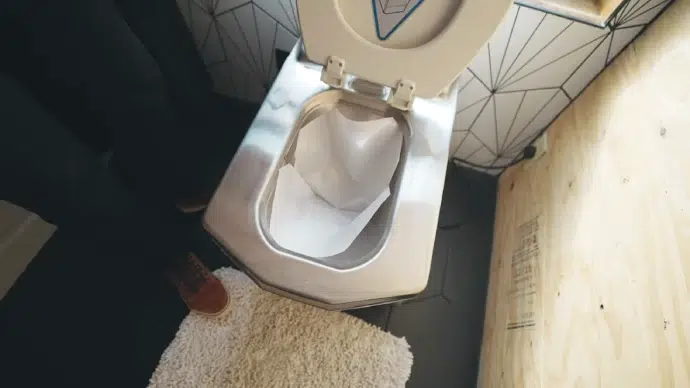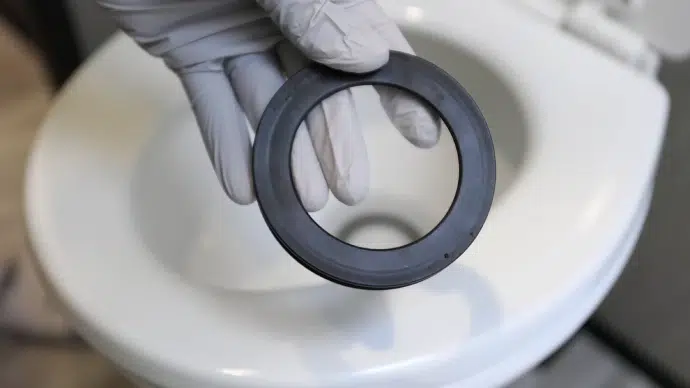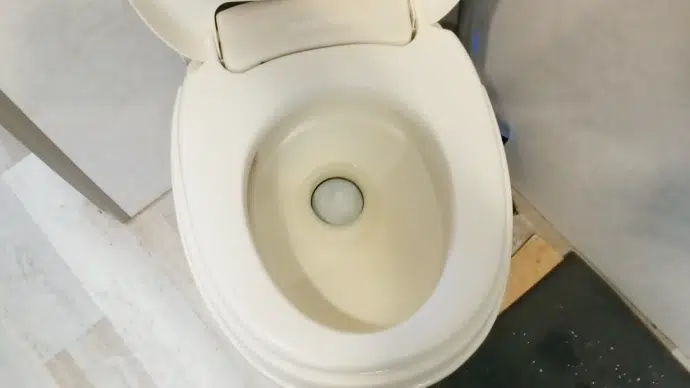Last Updated on April 20, 2023
An incinerator toilet is ideal for waste disposal in your RV if you’re looking for a reliable, low-maintenance system. It eliminates the need for plumbing and water and is easy to install and maintain.
Incinerator toilets are odor-free, making them a great option for campers who don’t want to be disturbed by unpleasant smells from the waste tank. With proper planning and preparation, installing an incinerator toilet can give you peace of mind knowing your waste will be properly disposed of without any hassle.
If you are considering investing in one of these toilets, read on to learn more about their features and how they work.
Can You Put an Incinerator Toilet in an RV: A Comprehensive Guide
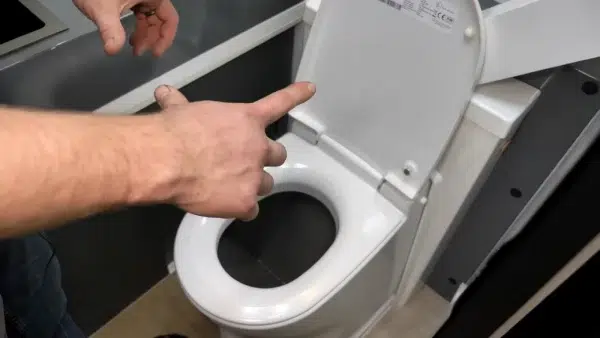
Incinerator toilets are a popular choice for RV enthusiasts who want an efficient, hassle-free way to dispose of waste. These toilets use high temperatures to incinerate waste, leaving behind only a small amount of ash that can be easily disposed of.
Understanding Incinerator Toilets
Incinerator toilets are a relatively new innovation in the world of sanitation technology. Unlike traditional toilets that use water to flush waste away, incinerator toilets burn waste using high temperatures, producing only ash as a by-product.
How Do Incinerator Toilets Work?
The process is actually quite simple. The waste is collected in a bowl or chamber when you use the toilet. Then, when you’re ready to dispose of it, the toilet uses an electric heating element to raise the temperature inside the bowl or chamber to over 1000 degrees Fahrenheit.
This intense heat quickly burns the waste into ash, which can then be easily disposed of.
Types of Incinerator Toilets Available in the Market
Incinerator toilets are becoming increasingly popular in the world of RVs due to their convenience and ease of use. Two main types of incinerator toilets are available on the market: electric and gas.
Electric incinerator toilets use electricity to heat up a coil, which then burns off the waste into ash. These toilets are typically more expensive than gas-powered models but offer greater efficiency and require less maintenance.
Gas-powered incinerator toilets, on the other hand, use propane or natural gas to ignite a flame that burns off the waste. These models tend to be less expensive than electric versions but require more maintenance due to regular cleaning of the burner assembly.
When choosing an incinerator toilet for your RV, it’s important to consider factors such as space availability, power source, and cost considerations. Electric models may require a larger power source than your RV can provide, while gas-powered models may not be as efficient as their electric counterparts.
Benefits of Using an Incinerator Toilet in Your RV
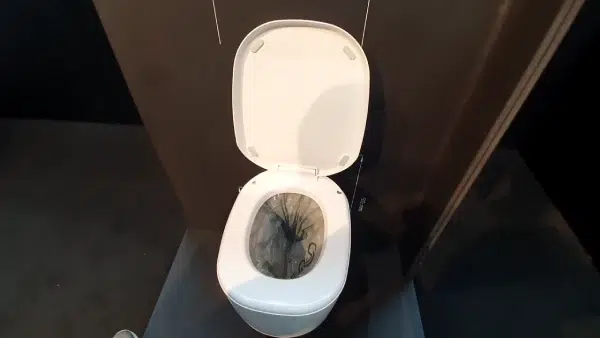
Toilets with incinerators are becoming increasingly popular in the RV community due to their numerous benefits. The following are some advantages of RVs with incinerator toilets.
No Water or Plumbing Needed
One of the main benefits of using an incinerator toilet in your RV is that you don’t need any water or plumbing connections. This means you can install it virtually anywhere in your RV without worrying about connecting it to a water source or sewer system.
Additionally, this makes it an ideal option for those who prefer to live off-grid or in remote locations with limited access to water and plumbing.
Easy to Install and Maintain
Unlike traditional toilets that require complicated plumbing, an incinerator toilet only needs a power source and enough space to fit. The installation process is straightforward, and most manufacturers provide detailed instructions on how to do it yourself.
If you’re not comfortable with DIY installation, you can always hire a professional to do it for you.
Maintaining an incinerator toilet is also relatively simple. Daily cleaning and maintenance are key to keeping your toilet in good working condition. You’ll need to empty the ash pan regularly, clean the bowl with a non-abrasive cleaner, and check for any damage or wear and tear.
Odor-Free Waste Disposal
The main advantage of using an RV incinerator toilet is odor-free waste disposal. Since the waste is burned into ash and gas, there is no need for chemicals or water to mask any unpleasant smells.
This makes it a great option for those who want to maintain a fresh and clean environment inside their RV.
Factors to Consider Before Installing an Incinerator Toilet in Your RV
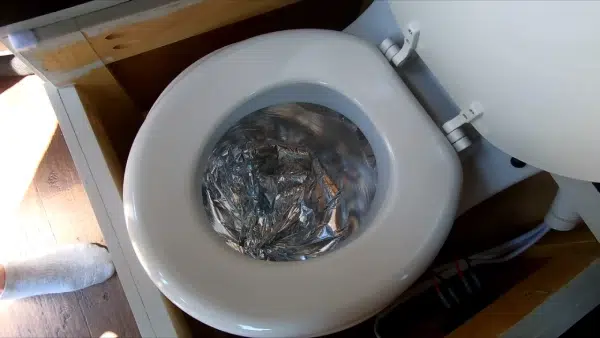
There are several factors to consider when considering an incinerator toilet. Below are some of the most important:
1. Space Availability
Incinerator toilets can be installed in RVs, but space availability is crucial. Incinerator toilets require more space than traditional RV toilets due to the need for additional equipment and ventilation systems. You must ensure your RV has enough space to accommodate the incinerator toilet and its accompanying systems.
Before purchasing an incinerator toilet, it’s important to measure the available space in your RV bathroom and compare it with the toilet size you want to install. Some manufacturers provide specific measurements for their products, which can help you determine if they will fit in your RV.
You should also consider the location of the incinerator toilet within your RV bathroom. The installation process may require modifications to your existing plumbing or electrical systems, so it’s important to plan accordingly and ensure enough space for these modifications.
2. Power Source
If you plan to install an incinerator toilet in your RV, it’s important to consider the power source required. These toilets typically require significant electricity, which can be challenging when traveling off-grid.
Most incinerator toilets require at least 110 volts of electricity to function properly. If you plan on using an incinerator toilet in your RV, you will need access to a reliable power source.
If you’re planning on boondocking or camping in remote locations without access to electricity, an incinerator toilet may not be the best option for you.
However, some models of incinerator toilets are designed specifically for use in off-grid situations. These models typically have lower power requirements and can be powered by alternative sources such as solar panels or generators.
It’s also important to consider the overall power consumption of your RV when installing an incinerator toilet. If you have other high-power appliances, such as air conditioners or refrigerators, adding an incinerator toilet could strain your RV’s electrical system.
3. Cost Considerations
When you are thinking about installing an incinerator toilet in your RV, the cost is an essential factor to consider. Incinerator toilets can range in price from 1,000to1,000 to 1,000to5,000 or more, depending on the model and feature you choose.
While this may seem like a significant investment upfront, it’s essential to consider the long-term cost savings. With no need for plumbing or water hookups, you’ll save money on installation and maintenance costs.
Additionally, because incinerator toilets burn waste at high temperatures, they require less frequent emptying and disposal than traditional RV toilets.
It’s also worth noting that some incinerator toilet models offer additional features that can increase costs. For example, some models have built-in fans or ventilation systems to reduce odors further and improve air quality in your RV.
Ultimately, the cost of an incinerator toilet will depend on your specific needs and budget. It’s essential to do your research and compare different models before making a decision. Consider factors such as size, power source requirements, and additional features when evaluating different options.
Installing an Incinerator Toilet in Your RV
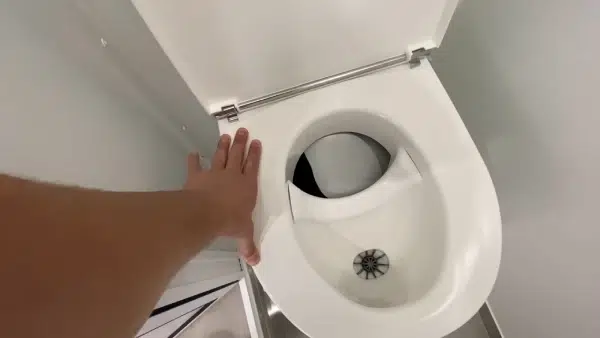
If you are considering installing an incinerator toilet in your RV, it is important to know that the process is relatively straightforward. However, before you begin, there are some safety precautions and factors to consider.
Step-by-step Installation Process
Installing an Incinerator Toilet in Your RV can be a great way to save space and eliminate the need for traditional plumbing. However, the installation process requires some planning and careful consideration of safety precautions.
Before installing your incinerator toilet, you need to ensure that you have enough space in your RV. These toilets are typically larger than traditional RV toilets and require adequate clearance around them. You must also consider the power source required for the toilet’s operation. Most incinerator toilets run on electricity, so you must ensure that your RV has a reliable power source.
Once you have determined that your RV has enough space and power for an incinerator toilet, it is time to begin the installation process. The first step is carefully reading and following the manufacturer’s instructions for your specific toilet model.
Next, you must remove your old toilet if you have one installed already. This can be done by disconnecting the water supply line and unscrewing any bolts holding it in place. Once removed, clean up any remaining debris or residue from the area where the new toilet will be installed.
After cleaning up, install any necessary brackets or mounting hardware according to the manufacturer’s instructions. Then connect any necessary electrical wiring and secure all connections tightly. At this point, it is important to double-check all connections before proceeding further.
Finally, test out your new incinerator toilet by running a few cycles with clean water before using it for waste disposal. This will help ensure everything works correctly and give you peace of mind when using it regularly.
Throughout the installation process, always remember to take proper safety precautions, such as wearing gloves and eye protection when handling materials or tools. Following these steps carefully should result in successfully installing an incinerator toilet in your RV.
Safety Precautions to Take
When putting incinerator toilets in RVs, you should take safety precautions to ensure the installation goes smoothly and without any accidents. Here are some safety tips to remember:
- Read the manufacturer’s instructions carefully before beginning the installation process. Make sure you understand all the steps involved and have all the necessary tools and materials on hand.
- Turn off all power sources before beginning the installation process. This includes disconnecting any electrical or gas lines that may be present.
- Wear protective gear such as gloves and safety glasses when handling parts of the incinerator toilet or during installation.
- Follow proper ventilation procedures during installation to prevent exposure to harmful gases or fumes.
- Ensure enough clearance around the toilet for proper operation and maintenance.
- After installation, test the incinerator toilet thoroughly to ensure it functions properly before using it regularly.
Caring for Your Incinerator Toilet
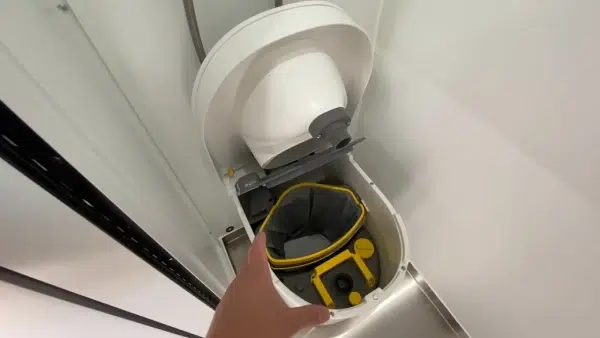
Caring for your incinerator toilet is important to maintaining its functionality and ensuring it lasts for a long time. Here are some tips to help you care for your incinerator toilet:
Daily Cleaning and Maintenance Tips
Keeping it clean and well-maintained is essential for its optimal performance. Here are some daily cleaning and maintenance tips to keep in mind:
- Use only recommended cleaning products: To avoid damaging the incinerator toilet’s components, it is crucial to use only the cleaning products recommended by the manufacturer. Avoid harsh chemicals or abrasive materials that scratch or corrode the toilet’s surface.
- Clean the bowl regularly: Use a soft-bristled brush and mild soap to clean the bowl after each use. Make sure to remove any debris or waste that may have accumulated inside. Rinse thoroughly with water.
- Empty the ashtray frequently: It collects all the solid waste that has been incinerated, so it needs to be emptied regularly. The frequency of this should be determined by the manufacturer.
- Check for any signs of wear and tear: Regularly inspect your incinerator toilet for any signs of damage or wear, such as cracks, leaks, or loose fittings. Address any issues immediately to prevent further damage.
- Keep the toilet dry: Wipe down any moisture from the seat and surrounding areas after each use. This will help prevent mold and mildew growth.
Troubleshooting Common Issues
If you have an incinerator toilet installed in your RV, it is important to know how to troubleshoot common issues that may arise. Here are some of the most common problems and their solutions:
- The toilet won’t turn on: If your incinerator toilet won’t turn on, the first thing to check is the power source. Ensure the unit is plugged in and the circuit breaker hasn’t tripped.
If everything seems to be in order, there may be a problem with the switch or control panel. Contact the manufacturer for assistance.
- Waste not fully incinerated: If you notice that waste is not fully incinerated after a cycle, it could be due to insufficient heat or airflow. Check that there is enough fuel (if using propane) and that the air intake and exhaust vents are clean and unobstructed.
- Unpleasant odor: While incinerator toilets are designed to be odor-free, sometimes unpleasant smells can linger. This could be due to a buildup of waste or debris in the unit. To remedy this, clean your incinerator toilet regularly according to manufacturer instructions.
- Unit won’t shut off: If your incinerator toilet doesn’t shut off after a cycle, it may be due to a faulty thermostat or timer. Contact the manufacturer for assistance.
How much power does an incinerator toilet use?

An incinerator toilet typically uses 1.5-2 kilowatt-hours of power, depending on the model and size.
The amount of power used is related to the amount of water consumed when flushing; the more water used, the more power is necessary to burn it effectively in the incinerator.
This type of toilet has a unique design that eliminates solid waste while simultaneously reducing water consumption, making it an ideal solution for remote installations or locations with limited water resources.
By utilizing a combustion process rather than relying on external energy sources, these toilets are extremely efficient and environmentally friendly.
Can you use toilet paper in an incinerator toilet?
You should not use toilet paper in an incinerator toilet. Incinerator toilets are designed to burn solid human waste, and using toilet paper may cause clogging or other problems that could damage the incinerator.
If you need to use toilet paper, use it in a traditional toilet and then flush the waste away.
Does an incinerating toilet smell?
An incinerating toilet does not typically produce a bad odor. The process of burning away the waste breaks down organic matter and destroys most odors, leaving behind only trace amounts of ash residues. With proper maintenance, an incinerating toilet should not produce any detectable smells.
Get Ready for RV Bliss with Incinerator Toilets
Incinerator toilets are an excellent solution for waste disposal in RVs as they offer numerous benefits, such as eliminating the need for plumbing or water, ease of installation and maintenance, and odor-free operation.
When considering purchasing an incinerator toilet for your RV, there are several factors to take into account, including space availability, power source, and price.
With proper care and maintenance, you can ensure that your incinerator toilet performs optimally while giving you peace of mind that your waste is being safely disposed of.
